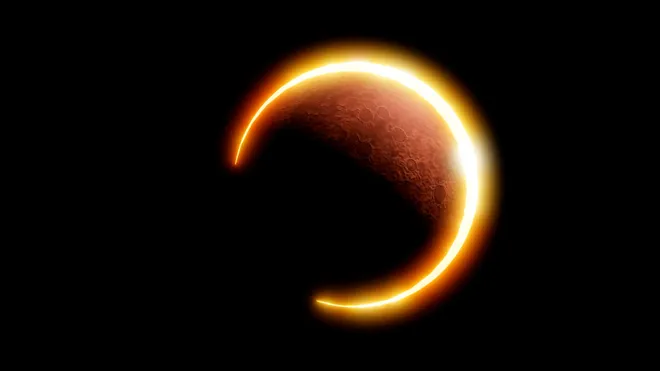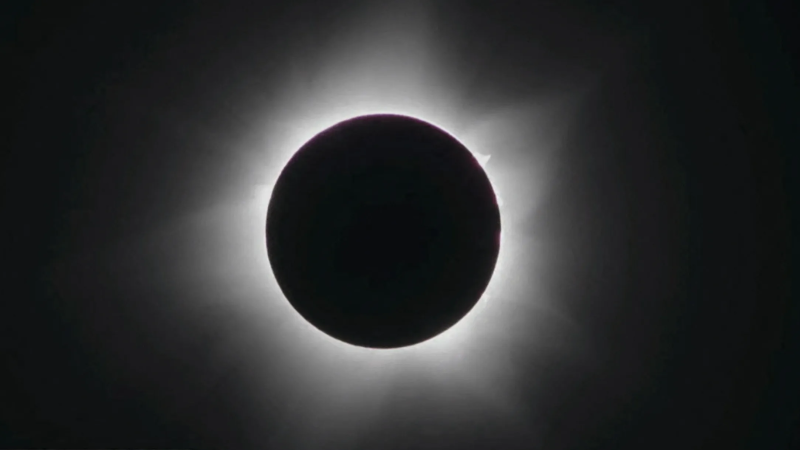A spectacular solar eclipse will darken the sky Saturday. Will the one in April be better?
Millions of Americans could be able to see a spectacular solar eclipse on Saturday, Oct. 14 as the moon passes in front of the sun, temporarily darkening the sky over a swath of the country. But experts say the real showstopper comes April 2024 when large portions of the country see an even more impressive total eclipse.
The October eclipse is known as an annular or "Ring of Fire" eclipse, where the moon slides in front of the sun but doesn't totally obscure it, creating a halo effect.
But during a total eclipse, like the one in April, the moon's apparent size from Earth will allow it to entirely cover the Sun's face, briefly turning day into night for those in its shadow.
"When it comes to the 'wow' factor, if a total solar eclipse is a 10, an annular solar eclipse is maybe a 2," said Dave Clark of NationalEclipse.com.
Here's what to know about the two upcoming eclipses:

What is the October annular eclipse?
Because of their relative positions, the moon won't completely block out the sun during this eclipse, and instead will leave a bright halo of light exposed around its edges, hence the "Ring of Fire" description. That means you'll need to wear eclipse safety glasses the entire time to protect your eyes.
During the eclipse, the temperature will drop and the Earth will darken for those in the eclipse path. Experts say you might experience animals, insects and birds reacting as if it were twilight or dawn.
"We won't get that totality, that complete darkness," said Clark. "But in terms of impressiveness it really is the next best thing."
The October eclipse will be visible in a diagonal swath of the country from Oregon through Texas, weather providing.

How is a total solar eclipse, like the one in April, different?
Because the moon's orbit isn't a perfect circle, its apparent size changes in the sky. During a total eclipse, the moon is big enough to entirely cover the Sun's face, briefly turning day into night on the Earth below. Those who have seen both kinds of eclipses generally consider a total eclipse far superior to annular one. The last total eclipse for the United States was in 2017.
October 2023 annular solar eclipse map
For the United States, the annular eclipse will become visible atop the rising sun on the Oregon coast on the morning of Oct. 14, then pass over Eugene before swinging across northern Nevada, southern Utah, almost directly over the Four Corners area of the Southwest, and then over Albuquerque and central Texas before sweeping across the Yucatan peninsula and Belize. It will all be over in a matter of minutes for stationary observers.
Specifically, NASA says the eclipse will begin in Oregon around 9:13 a.m. PDT and end in Texas around 12:03 p.m. CDT. It will take a little more than an hour for the moon to slide completely over the sun, creating the halo effect, and then another hour or so for it to slide back off.
Other parts of the United States will see a partial eclipse, where it looks like the moon has taken a bite out of the sun, but won't cover it.
April 2024 total solar eclipse map
The April 2024 total solar eclipse follows a different path than annular eclipse, beginning in Mexico before sweeping across Texas, the Midwest, upstate New York and northern New England. For that eclipse, the length of viewing will be best in Texas, decreasing as it travels northeast.

How long will the annular October 2023 eclipse last?
Depending on how close you are to the centerline of the eclipse path, it could be a little more than four minutes, and depending on where the Moon is in the sky, its shadow could be traveling across the ground at more than 3,000 mph, Clark said. If you're atop a mountain, it's possible to see the shadow sweep across the Earth below.
How long will the April 2024 total solar eclipse last?
Depending on where you are, the totality will last more than four minutes, according to Clark and NASA. With this eclipse, you can remove your eclipse glasses once the moon has fully blocked out the sun and darkness has fallen. You'll need to put them back on again as the moon begins uncovering the sun again.

Disclaimer: The copyright of this article belongs to the original author. Reposting this article is solely for the purpose of information dissemination and does not constitute any investment advice. If there is any infringement, please contact us immediately. We will make corrections or deletions as necessary. Thank you.





